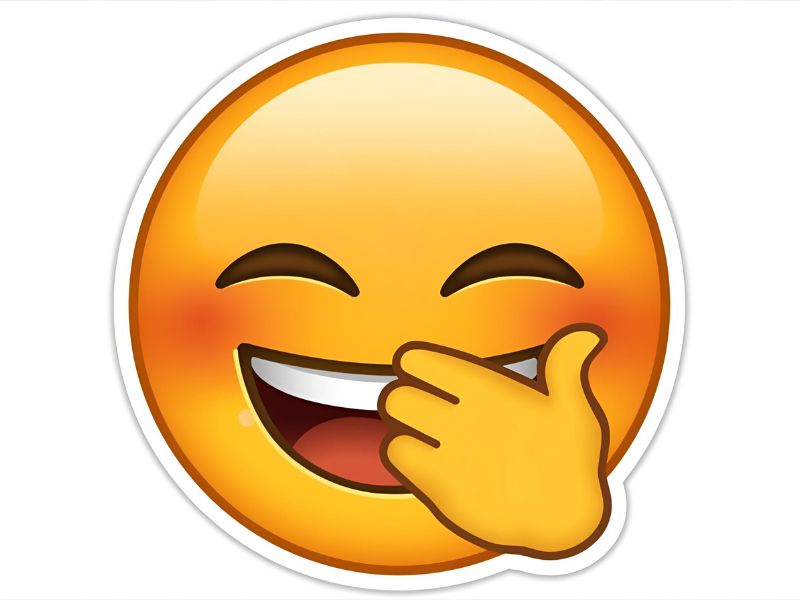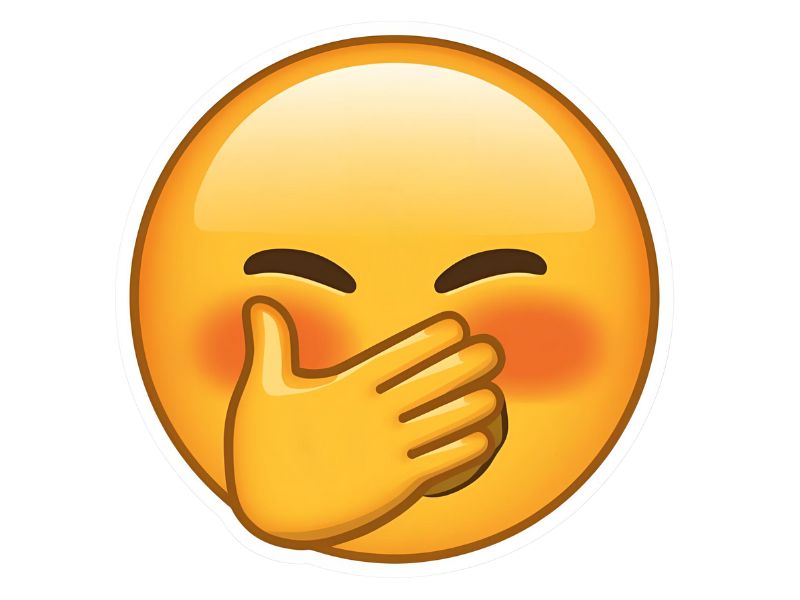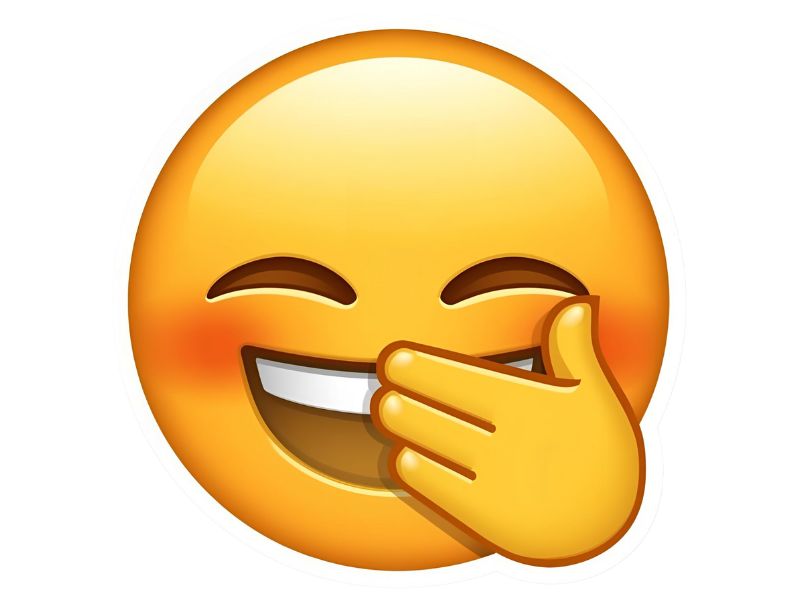The Trying Not To Laugh Emoji is a popular way to show suppressed laughter in digital communication. While Unicode has not created an official emoji specifically labeled as “Trying Not To Laugh,” users often rely on existing emojis such as (Smirking Face), (Grimacing Face), or ️ (Face in Clouds) to convey the same feeling.
This emoji expression has become a staple in chats, memes, and social media, especially when someone wants to signal they find something funny but are holding back their reaction.

What Is Trying Not To Laugh Emoji?
The Trying Not To Laugh Emoji usually refers to a combination of emojis that capture the feeling of resisting laughter, including:
- Smirking Face – Suggests someone hiding amusement.
- Grimacing Face – Shows nervousness or suppressed giggles.
- Zipper-Mouth Face – Symbolizes keeping quiet while holding back laughter.
- Face With Tears of Joy – Sometimes used sarcastically to mean “I’m trying not to laugh too hard.”
These variations are often used depending on the context of the conversation.
History Of Trying Not To Laugh Emoji
The idea of a Trying Not To Laugh Emoji grew from the popularity of memes and online jokes where users needed an expression for “barely holding it in.” While Unicode added many laughter-related emojis like (2010) and (2016), none specifically depict suppressed laughter.
Over time, internet communities adopted emojis like and as stand-ins for the Trying Not To Laugh Emoji, especially in Twitter threads, TikTok captions, and reaction memes.

Symbolic Meanings Of Trying Not To Laugh Emoji
The Trying Not To Laugh Emoji carries several symbolic meanings:
- Suppressed Humor – Finding something funny but staying composed.
- Sarcasm – Using it ironically in debates or jokes.
- Embarrassment – When laughter is inappropriate for the situation.
- Awkwardness – Smiling through discomfort.
- Playful Banter – Light teasing among friends.
Common Uses Of Trying Not To Laugh Emoji
Here are typical contexts where people use the Trying Not To Laugh Emoji:
- Funny Stories – Reacting when trying not to laugh at someone’s fail.
- School Or Work Jokes – Expressing hidden amusement in serious situations.
- Memes – Used as captions for awkwardly funny scenarios.
- Sarcastic Replies – Showing irony or mock seriousness.
- Group Chats – When trying not to laugh out loud in front of others.

Trying Not To Laugh Emoji In Social Media / Meme Culture
The Trying Not To Laugh Emoji is a staple of meme culture. On Twitter and TikTok, and often appear in captions like “Me trying not to laugh when…”. These posts highlight awkward or hilarious moments where laughing might be inappropriate.
Reaction images and GIFs are frequently paired with these emojis to exaggerate the feeling of suppressed laughter, making them a core part of internet humor.
Why People Love Trying Not To Laugh Emoji
The Trying Not To Laugh Emoji is widely loved because:
- It’s relatable in everyday situations.
- It adds sarcasm to texts and memes.
- It allows nuanced humor beyond just .
- It works in both serious and lighthearted contexts.
- It’s part of internet culture and trending memes.
Tips For Using Trying Not To Laugh Emoji Effectively
Here are some practical tips for using the Trying Not To Laugh Emoji:
- Context Matters – Use in awkward humor, in sarcastic replies.
- Pair With Text – Add “trying not to laugh rn” for clarity.
- Mix Emojis – Combine for stronger effect.
- Meme Captions – Use in posts about funny fails or awkward silence.
- Stay Playful – Keep tone light to avoid confusion.

The Future Of Trying Not To Laugh Emoji
As emoji libraries expand, Unicode may eventually add more expressive faces that better represent nuanced emotions like suppressed laughter. For now, the Trying Not To Laugh Emoji thrives as a community-created concept, represented by creative combinations of existing emojis.
Its popularity in memes and social media suggests that demand for such an emoji will only grow in the future.
Conclusion
The Trying Not To Laugh Emoji may not exist officially, but it is a well-loved concept in digital culture. Using emojis like , , and , people capture the feeling of holding back laughter in funny or awkward situations. It remains an essential tool for humor, sarcasm, and relatability online.
For more details about emojis, visit EmojiHub at https://emojihub.online/